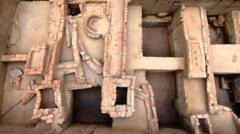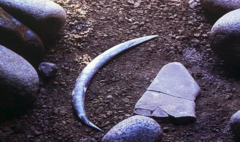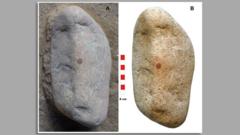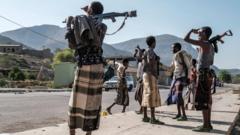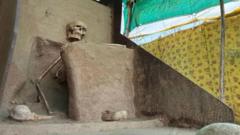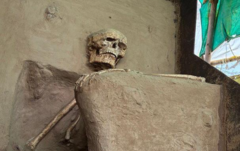The village of Keeladi, located in Tamil Nadu, India, has become a hotbed of archaeological discovery and political contention. During excavations in the region, archaeologists have uncovered ancient artefacts, including fragments of terracotta pots and remnants of brick structures, buried deep in trenches. These artefacts date back approximately 2,000 to 2,500 years, with the earliest items tracing back to around 580 BCE, fundamentally reshaping perceptions of early civilizational development in the Indian subcontinent.
Keeladi sits 12 kilometers from Madurai along the banks of the Vaigai River and was among the 100 sites identified for excavation by the Archaeological Survey of India (ASI) in 2013. The site gained prominence after notable discoveries of red-and-black pottery by a local schoolteacher in the 1970s prompted deeper investigation. Since the first excavations began in 2014, over 15,000 artefacts have been discovered within just four of the 100 acres slated for exploration, contributing to a burgeoning archive now displayed in a nearby museum.
The findings, particularly complex brick structures and urban planning features, suggest that Keeladi was a bustling, literate society with designated areas for habitation, burial rites, and industrial activities. Ajay Kumar, who is leading the archaeological team at Keeladi, emphasizes its significance as the first well-defined ancient urban center found in southern India. This discovery challenges a predominantly northern narrative of Indian civilization’s evolution, particularly the historical emphasis placed on the Indus Valley Civilization, which flourished between 3300 and 1300 BCE.
The prospect of redefining historical narratives has resonated with many residents, invoked by sentiments of pride and the reinforcement of regional identity. William Daniel, an educator from Kerala, articulated that the findings affirm the importance of southern civilizations, asserting that "our civilization is just as ancient and important as the one in the north."
This challenge to established historical perspectives is set against a backdrop of growing tensions between India’s northern and southern regions. The ASI's historical focus has long favored regions in the north, contributing to a narrative that asserts the Aryans “civilized” southern Dravidian societies. This narrative extends to literacy, with traditional beliefs positing that the Ashokan Brahmi script found in the north served as a precursor to writing systems across South Asia. However, the Keeladi finds—including a Tamil Brahmi script dating as far back as the 6th Century BCE—suggest that this script may predate its northern counterpart, indicating a more complex cultural evolution.
Disputes over interpretations, however, remain contentious. Some claim that artifacts reveal similarities to those from the Indus Valley, suggesting migration to the south may have spurred urbanization during this period. Such assertions have ignited debate within the academic community, with differing opinions regarding the extent of migration given the logistical limitations of ancient travel.
Politically, the excavation site has become a focal point for cultural pride and contention, particularly surrounding the transfer of ASI archaeologist Amarnath Ramakrishnan, who spearheaded the digs. Critics of the federal government have accused it of undermining Tamil heritage. Recent calls from Tamil Nadu's Chief Minister for transparency over the ASI's handling of reports further highlight the intertwined nature of archaeology and politics in shaping regional narratives.
As scholars and politicians continue to dissect the implications of Keeladi's findings, the significance of these discoveries extends beyond academic inquiry. They embody broader debates about identity and heritage, highlighting how our understanding of the past remains relevant to contemporary cultural discourse. As these discussions unfold, the story of Keeladi serves as a reminder that our historical narratives are often more interconnected than they appear, reflecting both our shared human experience and the complexities of regional identities.
Keeladi sits 12 kilometers from Madurai along the banks of the Vaigai River and was among the 100 sites identified for excavation by the Archaeological Survey of India (ASI) in 2013. The site gained prominence after notable discoveries of red-and-black pottery by a local schoolteacher in the 1970s prompted deeper investigation. Since the first excavations began in 2014, over 15,000 artefacts have been discovered within just four of the 100 acres slated for exploration, contributing to a burgeoning archive now displayed in a nearby museum.
The findings, particularly complex brick structures and urban planning features, suggest that Keeladi was a bustling, literate society with designated areas for habitation, burial rites, and industrial activities. Ajay Kumar, who is leading the archaeological team at Keeladi, emphasizes its significance as the first well-defined ancient urban center found in southern India. This discovery challenges a predominantly northern narrative of Indian civilization’s evolution, particularly the historical emphasis placed on the Indus Valley Civilization, which flourished between 3300 and 1300 BCE.
The prospect of redefining historical narratives has resonated with many residents, invoked by sentiments of pride and the reinforcement of regional identity. William Daniel, an educator from Kerala, articulated that the findings affirm the importance of southern civilizations, asserting that "our civilization is just as ancient and important as the one in the north."
This challenge to established historical perspectives is set against a backdrop of growing tensions between India’s northern and southern regions. The ASI's historical focus has long favored regions in the north, contributing to a narrative that asserts the Aryans “civilized” southern Dravidian societies. This narrative extends to literacy, with traditional beliefs positing that the Ashokan Brahmi script found in the north served as a precursor to writing systems across South Asia. However, the Keeladi finds—including a Tamil Brahmi script dating as far back as the 6th Century BCE—suggest that this script may predate its northern counterpart, indicating a more complex cultural evolution.
Disputes over interpretations, however, remain contentious. Some claim that artifacts reveal similarities to those from the Indus Valley, suggesting migration to the south may have spurred urbanization during this period. Such assertions have ignited debate within the academic community, with differing opinions regarding the extent of migration given the logistical limitations of ancient travel.
Politically, the excavation site has become a focal point for cultural pride and contention, particularly surrounding the transfer of ASI archaeologist Amarnath Ramakrishnan, who spearheaded the digs. Critics of the federal government have accused it of undermining Tamil heritage. Recent calls from Tamil Nadu's Chief Minister for transparency over the ASI's handling of reports further highlight the intertwined nature of archaeology and politics in shaping regional narratives.
As scholars and politicians continue to dissect the implications of Keeladi's findings, the significance of these discoveries extends beyond academic inquiry. They embody broader debates about identity and heritage, highlighting how our understanding of the past remains relevant to contemporary cultural discourse. As these discussions unfold, the story of Keeladi serves as a reminder that our historical narratives are often more interconnected than they appear, reflecting both our shared human experience and the complexities of regional identities.

